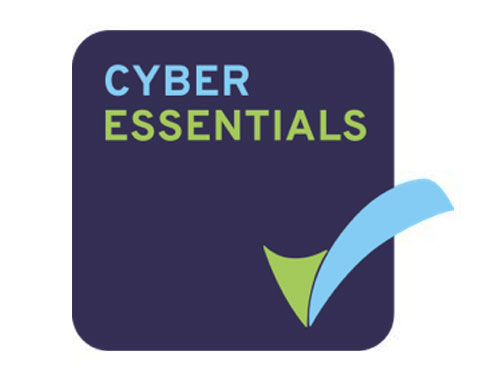
Technology-driven companies may offer some of the best jobs on the market, but they still fall behind when it comes to diversity and inclusion. While most leaders agree that diverse work environments drive innovation, there are still a handful of certain groups who are often underrepresented in this sector. This includes women, people from ethnic minority backgrounds, as well as members of the LGBTQ+ community and people with disabilities and neurodiversity.
The University of Massachusetts Amherst reports that most technology professionals earn about 48% more than employees in other industries. Plus, tech companies are at the forefront of innovation, spending millions on cutting-edge tools designed to automate and optimize their processes. Yet, these certain groups continue to represent a small fraction of their workforce.
For example, few Asian employees hold leadership roles in American companies. Black and Hispanic workers, as well as women of all backgrounds, are poorly represented in the tech industry, too. Moreover, women often face different challenges than their male counterparts, including unfair wages, poor work-life balance, and fewer growth opportunities.
But why is diversity so important and how does it benefit your business? And most importantly, what can you do to create a diverse workplace where all employees feel valued and empowered? Let’s find out.
The lack of diversity in tech is an ongoing problem
Diversity in the workplace isn’t just about political correctness.
In 2019, the most diverse organizations outperformed those with the least diverse workforce by 36% in terms of profitability, according to a 2020 McKinsey report. This practice can also increase job satisfaction, reduce turnover rates, and improve work performance.
Yet, the lack of diversity in tech is an ongoing problem. Our latest Nigel Frank Careers and Hiring Guide: Business Applications Edition 2021-22 found that roughly 60% of businesses in the Microsoft Business Applications ecosystem have a diversity and inclusion (D&I) policy. What’s more, only 47% of female respondents believed that their employers were paying men and women equally, highlighting the scale of the problem.
McKinsey also reports that female executives account for less than 25% of corporate leadership roles across major industries. Researchers also say that only 21% of technology and media professionals are women, and the discrepancy is even more severe for Black female professionals, who face the greatest challenges due to discrimination, sexism, and other biases.
A 2021 Pew Research Center survey had similar findings. Analysts report that Black men and women hold a mere 7% of computer jobs. Hispanic workers are subject to discrimination, too.
This ongoing problem is fueling the skills gap in tech. In a recent survey by Wiley, 50% of respondents said they had left a tech job or wanted to do so because they felt unwelcome in the workplace. Nearly 70% reported feeling uncomfortable in a tech role due to their gender, ethnic background, or disability.
What many leaders don’t realize is that more diverse teams can unlock innovation and improve a company’s bottom line.
When people from different backgrounds work together, they’re more likely to come up with innovative ideas and find solutions to existing challenges because they can work off so many different perspectives.
Why workplace diversity matters
The tech industry is facing a major talent shortage partly due to the digital skills gap and partly due to the large number of workers leaving their jobs.
Gartner reports that IT executives across most industries have difficulty implementing new technologies due to a lack of talent availability—and Microsoft Dynamics is no exception. As a business leader, you may have a hard time finding qualified professionals who can leverage its capabilities.
A more diverse workforce can help address the digital skills gap and bring a fresh perspective to your business practices. With this approach, you will have access to a wider talent pool and be able to innovate faster. Plus, you may experience lower turnover and absenteeism.
Diversity also translates into a more creative work environment. For example, Singapore ranks highest on the digital readiness index despite its small size. This tiny island is home to skilled professionals from all backgrounds, which allows it to continuously innovate and leverage emerging technologies.
Another aspect to consider is that workplace diversity can lead to better decision-making. People from different backgrounds have unique ways of thinking and allow us to interpret things differently, ensuring best results.
By working together, they can learn from each other, brainstorm ideas, and bring more value to the table. On top of that, they are more likely to develop creative solutions compared to a homogenous group of people with similar perspectives and skill sets.
Last but not least, shifting to more diverse hiring practices can boost a company’s reputation. Research done by Glassdoor revealed that more than one-third of job seekers would not join an organization that lacks diversity. By prioritizing diversity and inclusion, you will be perceived as a socially responsible brand and find it easier to attract talent.
Take these steps to promote workplace diversity
Workplace diversity could be the solution to the talent shortage in tech, with so many industry giants already taking steps towards positive change.
For example, the global professional services company Accenture ensures pay equity for all employees, regardless of their gender or ethnic background. Moreover, the organization is committed to achieving a gender-balanced workforce over the next three years. As of today, it has 700,000 employees from a variety of cultures.
On the other hand, Microsoft took a stance against racial injustice. In 2020, the company spent an additional $150 million to increase diversity across its workforce, among other measures. Its leaders also plan to double the number of Black employees in leadership roles over the next three years.
Another example is Apple, whose social diversity promise strives to promote diversity in the workplace by hiring more women and minorities. About 45% of the company’s leaders under the age of 30 are women, while 17% consist of African Americans, Hispanics, and other ethnic groups. Moreover, Apple has achieved pay equity for men and women in all countries where it operates.
In 2020, the tech giant Amazon announced its intention to double the number of Black leaders across the company and remove non-inclusive terms, such as “master” and “whitelist” from its documentation. Additionally, all employees are required to complete D&I training as part of the job, reports USA Today.
Small and medium enterprises may not have the same resources as Apple or Amazon, but this isn’t an excuse to ignore diversity. From writing more inclusive, and gender-neutral job descriptions to prioritizing skills-based hiring over degree-led hiring, there are steps you can take to build a diverse workplace.
Need some further tips? Continue reading to learn what you can do to improve diversity in your business, and ultimately, in the Microsoft Dynamics ecosystem as a whole.
Our top 5 tips for improving company diversity
1. Conduct diversity training
For starters, create and implement a diversity training program for your employees, including those in leadership roles. This measure may help reduce discrimination and prejudice in the workplace, leading to higher employee morale and increased job satisfaction.
Diversity training doesn’t have to be expensive or time-consuming. You can simply ask your HR manager or other leaders to put together a course that outlines the company’s diversity goals, initiatives, and best practices.
If you do have the budget available, you can ask a third-party training provider to come in and host a diversity workshop for all your employees to take part in, to ensure everyone is on the same page with it.
2. Create more inclusive workplace policies
A flexible workplace is more likely to favor women and other underrepresented groups, points out the Center for Workforce Inclusion. For example, female employees with families and children may find it easier to work remotely rather than go to the office on a daily basis, meaning you’ll need to devise a way to manage your virtual teams who are split across different locations.
Providing accessible workstations and assistive technology is just as important, as it allows you to create a more comfortable space for employees who are ill or have disabilities.
Remember that diversity and inclusion go hand in hand. These values have the power to drive organizational culture change and show that you’re making an effort to accommodate people with different backgrounds and needs.
Go one step further and update your workplace policies with regards to the hiring process, dress code, parental leave, holidays, and other aspects. For instance, you can start by adopting a more relaxed dress code that allows people to express themselves a bit more and be comfortable.
3. Acknowledge cultural differences
Another way to promote diversity is to acknowledge and celebrate the cultural differences in your organization. Encourage employees to talk about their traditions, holidays, and customs during team outings or company events. Consider creating a calendar or shared document where your team members can list culturally significant holidays.
You may also organize events that celebrate cultural diversity, such as day trips to ethnic festivals. These small things will make your staff members feel valued, leading to higher engagement and retention rates. Plus, with so many events to get involved in all year long, you’ll appeal to future candidates, too.
4. Commit to skills-based hiring
A growing number of companies are adopting skills-based hiring practices, reports Harvard Business Review. Some went as far as removing college degree requirements from job listings. This approach grants them access to a larger pool of candidates with unique skills and abilities.
If you’re trying to create a more diverse workplace, hire based on skills to avoid biases in the recruitment process. For example, you may use Gender Decoder and other tools to find potential hires on social media or job boards without seeing their names or faces, or to check your job listings for subtle bias.
Alternatively, you can simply remove names, gender information, and other identifying data from resumes to ensure a fair hiring process. When it gets to interview stage, have moderators present to ensure you’re judging each interviewee fairly based on their performance and suitability for the job, rather than letting unconscious biases creep in.
5. Team up with multicultural professional organizations
Take a proactive approach to diversity hiring and team up with multicultural professional organizations to find top talent. Search for local or national groups that support women and minorities and let them know about your efforts to build a more diverse workplace. Chances are, they may be able to put you in touch with qualified candidates from a variety of backgrounds.
For example, the American Association for Access, Equity, and Diversity has more than 1,100 job seekers and 1,400 employers in its database. The organization also hosts career fairs and other events to connect companies with potential hires.
When improving diversity practices within your business, make sure you’re taking the steps needed to demonstrate a genuine commitment to workplace diversity, rather than performative actions. Invest in cross-training programs, tweak your hiring practices, and eliminate unconscious bias—and ensure your employees are on board with this message, too.
Most importantly, acknowledge that everyone has equal rights, regardless of their gender, ethnicity, or age.
Need help? Get in touch to see how we can help improve your diversity hiring or use our handy candidate search tool to find some great, diverse talent.
Looking for fresh Dynamics talent to join your team?
More choice than any other agency and many candidates ready to start immediately.



